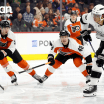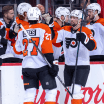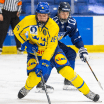The Flyers rank in the middle of the NHL pack in power play efficiency this season, ranking 16th in the 31-team league with a 20.8 success rate (47-for-226). Overall, the team has a 102.6 special teams number (combined power play and penalty kill percentages).
Inside the numbers: Power play adjustments
The Flyers rank in the middle of the NHL pack in power play efficiency this season, ranking 16th in the 31-team league with a 20.8% success rate


















